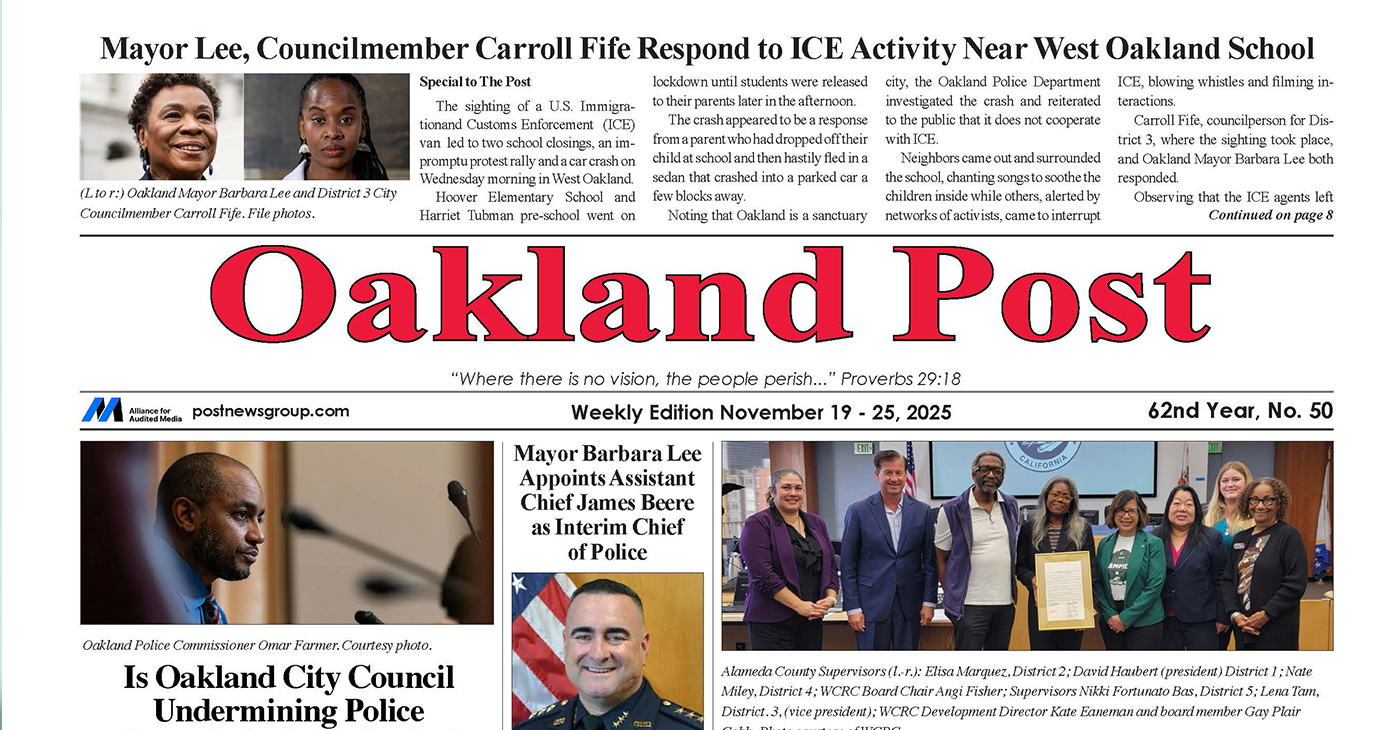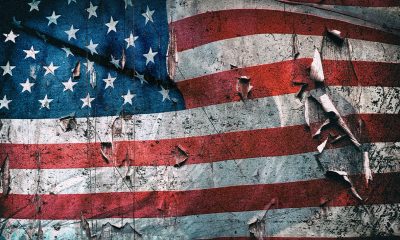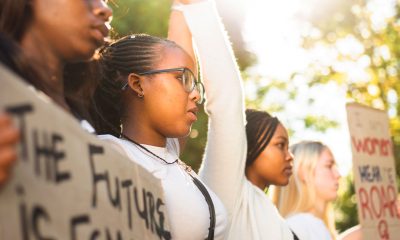Business
Pistons host sports career seminar for Detroit King HS students
MICHIGAN CHRONICLE — To end its Black History Month festivities in the month of February, the Detroit Pistons fittingly convened at Detroit Martin Luther King Jr. Senior High School.
By Branden Hunter
To end its Black History Month festivities in the month of February, the Detroit Pistons fittingly convened at Detroit Martin Luther King Jr. Senior High School.
Through the Business of Sports Seminar, a first-time event, the Pistons’ goal was to use the game of basketball as a vehicle to inspire students and bring awareness to the numerous sports-related career options available off the court.
Over 150 sports management students who attend King High School had the opportunity to listen to Detroit Pistons front office leadership team members share their career path stories and offer advice to the younger generation. The starting five included Vice President of Business Affairs Awenate Cobbina, Assistant General Manager Sachin Gupta, Vice President of Brand Marketing Alicia Jeffreys, Senior Director of Community and Social Responsibility Erika Swilley, and FOX Sports Detroit Reporter/Host Trevor Thompson.
“We wanted to make sure the students at King had an opportunity to interact with individuals in sports that look like them,” said Lawrence Fitz, assistant principal at King. “The students expressed an interest in actually being able to meet and talk to some of the big-name people that are in sports marketing and it’s a collaboration with our sports marketing program to make sure that we have viable programs in the Detroit Public Schools Community District for students who have a desire to go into the sports field.”
Many of the students in attendance were King football and boys and girls basketball players. The game will end for many of them at some points, whether that is after high school, college, or even pro, and they will need to find another career to venture off into in order to provide for themselves. That is the story of Cobbina, who played basketball at Emory University in Atlanta and put the basketball down to pursue a career with professional sports teams in the front office.
“I knew growing up that I wanted to work in sports,” said Cobbina. “I played basketball and baseball and at some point, I realized that I couldn’t jump high enough to make the NBA. But I played college basketball to keep my education going and when I graduated, I decided I wanted to have a career in sports. I applied for an internship with the NFL, luckily I got it, and I turned that opportunity into other opportunities.”
Brand marketing and social media are two vital components among NBA teams. One of the primary reasons that fans watch the Pistons or buy team gear is because the brand is strong in the city. If you have established credibility, then people easily see the value of your offerings. Social media has played a vital role in building this influence and Jeffreys and Swilley have played a larger part in that process.
Jeffreys has been with the team since 2002, beginning as a market development manager, climbing up the ranks over the years as an African-American woman from Flint, Michigan.
“Twenty years ago, Flint was a basketball city,” said Jeffreys. “I’m not as tall as Awenate, so I knew I wasn’t going to play basketball either. But because the Flint community rallied around basketball, I always wanted to be a part of the sports landscape. I attended Michigan for sports management, stepping out of my comfort zone there, working with hockey and golf, things I was not familiar with growing up in Flint. But that allowed me to be more diverse in my career.”
Detroit Pistons activities throughout the month of February focused on celebrating Black History and culture, while inspiring and providing opportunities for Detroit youth through arts, education, and basketball. The organization also aims to bridge divides while demonstrating the importance of equality, diversity, inclusion, respect, and teamwork.
Equality and inclusion was the main theme for the Pistons’ Black History Month activities and African-Americans breaking in the sports journalism field and be difficult. There is no manual that explains how to break into the world of sports journalism as a minority. The usual route through university and internships is there, but trying to learn the craft and looking for a foothold in the industry, there are very few minorities accessible enough to ask for guidance.
Thompson beat the odds, growing up and receiving his education in Canada and is now an Emmy Award-winning reporter who has covered the Tigers, Red Wings, and Pistons over the years.
“As corny as it sounds, I just followed my dreams,” said Thompson. “A wise man once told me that if you do a job you love, you’ll never work a day in your life. That sounded good to me. I had a dream to be a sports broadcaster and I followed my dream to where it has brought me today. I’ve been blessed enough to be here in Detroit and it’s been a great run since I came here 19 years ago.”
Representation in sports marketing is essential. Those looking to potentially pursue that career like to feel that they can relate to something or someone currently in those roles. They also like to know that they are not alone or that they, too, can be a high-ranking official in the front office for the Pistons or some other team.
“The five individuals that were here this morning not only represented the African-American community, but they represented female professionals, and people of other ethnicities,” Fitz added. “We hope that our students left here knowing that their goals and dreams are obtainable.”
This article originally appeared in the Michigan Chronicle.
Alameda County
Seth Curry Makes Impressive Debut with the Golden State Warriors
Seth looked comfortable in his new uniform, seamlessly fitting into the Warriors’ offensive and defensive system. He finished the night with an impressive 14 points, becoming one of the team’s top scorers for the game. Seth’s points came in a variety of ways – floaters, spot-up three-pointers, mid-range jumpers, and a handful of aggressive drives that kept the Oklahoma City Thunder defense on its heels.

By Y’Anad Burrell
Tuesday night was anything but ordinary for fans in San Francisco as Seth Curry made his highly anticipated debut as a new member of the Golden State Warriors. Seth didn’t disappoint, delivering a performance that not only showcased his scoring ability but also demonstrated his added value to the team.
At 35, the 12-year NBA veteran on Monday signed a contract to play with the Warriors for the rest of the season.
Seth looked comfortable in his new uniform, seamlessly fitting into the Warriors’ offensive and defensive system. He finished the night with an impressive 14 points, becoming one of the team’s top scorers for the game. Seth’s points came in a variety of ways – floaters, spot-up three-pointers, mid-range jumpers, and a handful of aggressive drives that kept the Oklahoma City Thunder defense on its heels.
One of the most memorable moments of the evening came before Seth even scored his first points. As he checked into the game, the Chase Center erupted into applause, with fans rising to their feet to give the newest Warrior a standing ovation.
The crowd’s reaction was a testament not only to Seth’s reputation as a sharpshooter but also to the excitement he brings to the Warriors. It was clear that fans quickly embraced Seth as one of their own, eager to see what he could bring to the team’s championship aspirations.
Warriors’ superstar Steph Curry – Seth’s brother – did not play due to an injury. One could only imagine what it would be like if the Curry brothers were on the court together. Magic in the making.
Seth’s debut proved to be a turning point for the Warriors. Not only did he contribute on the scoreboard, but he also brought a sense of confidence and composure to the floor.
While their loss last night, OKC 124 – GSW 112, Seth’s impact was a game-changer and there’s more yet to come. Beyond statistics, it was clear that Seth’s presence elevated the team’s performance, giving the Warriors a new force as they look to make a deep playoff run.
Activism
Oakland Post: Week of November 26 – December 2, 2025
The printed Weekly Edition of the Oakland Post: Week of November 26 – December 2, 2025

To enlarge your view of this issue, use the slider, magnifying glass icon or full page icon in the lower right corner of the browser window.
Activism
Oakland Post: Week of November 19 – 25, 2025
The printed Weekly Edition of the Oakland Post: Week of November 19 – 25, 2025

To enlarge your view of this issue, use the slider, magnifying glass icon or full page icon in the lower right corner of the browser window.
-

 Activism3 weeks ago
Activism3 weeks agoOakland Post: Week of November 12 – 18, 2025
-

 Activism2 weeks ago
Activism2 weeks agoIN MEMORIAM: William ‘Bill’ Patterson, 94
-

 Activism3 weeks ago
Activism3 weeks agoHow Charles R. Drew University Navigated More Than $20 Million in Fed Cuts – Still Prioritizing Students and Community Health
-

 Bay Area3 weeks ago
Bay Area3 weeks agoNo Justice in the Justice System
-

 #NNPA BlackPress3 weeks ago
#NNPA BlackPress3 weeks agoThe Perfumed Hand of Hypocrisy: Trump Hosted Former Terror Suspect While America Condemns a Muslim Mayor
-

 #NNPA BlackPress2 weeks ago
#NNPA BlackPress2 weeks agoTrump’s Death Threat Rhetoric Sends Nation into Crisis
-

 #NNPA BlackPress4 weeks ago
#NNPA BlackPress4 weeks agoProtecting Pedophiles: The GOP’s Warped Crusade Against Its Own Lies
-

 #NNPA BlackPress3 weeks ago
#NNPA BlackPress3 weeks agoIn Major Win for Rep. Al Green, Texas Maps Blocked by Federal Judge




















































